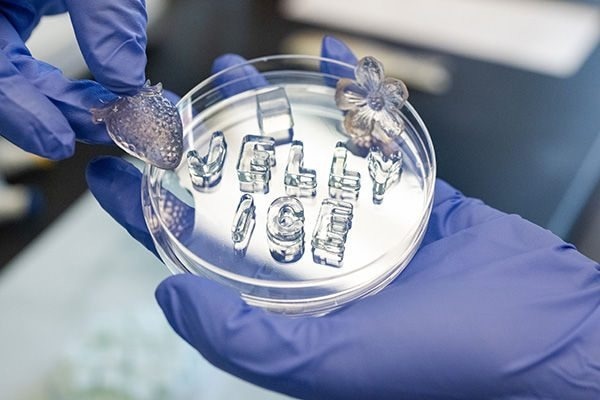Scientists at UC Davis have created "jelly ice", a reusable, compostable cooling material that stays solid without melting into messy puddles. It's a promising alternative for safe food, medicine, and biotech transport.
 Jelly ice is a reusable and compostable cooling material that doesn’t melt into a mess like regular ice. Image Credit: UC Davis
Jelly ice is a reusable and compostable cooling material that doesn’t melt into a mess like regular ice. Image Credit: UC Davis
The inspiration behind this latest study began with a practical problem. Luxin Wang, a food scientist at UC Davis, noticed that ice in supermarket seafood displays melts into a mess of water. These pools of melted ice could easily become potential sources of contamination.
Graduate researchers in Wang's team took up the challenge to design a cooling material that could avoid this dilemma.
Their answer was gelatin, a natural protein that forms long molecular chains.
Initially we thought of a tofu-like material; frozen tofu keeps its water inside. However, when you thaw it, it releases the water. So, we tried to solve that issue with another material: gelatin.
Gang Sun, Materials Scientist and Graduate Research Advisor, University of California, Davis
When linked together, the gelatin chains create a hydrogel filled with microscopic pores capable of holding water in place. Unlike tofu, gelatin hydrogels keep water trapped inside, even with repeated freeze-thaw cycles.
Early studies on hydrogels derived from this natural polymer (also known as a biopolymer) were successful. Water remained inside the pores as it transitioned from liquid to ice and back again, without harming the structures or flowing out of the hydrogel.
Zou has since refined the process into a simple, one-step method to produce jelly ice, which is 90 % water and completely food safe. It can be repeatedly washed with water or diluted bleach, frozen, and thawed. The cooling material jiggles and squishes at room temperature. But when cooled below the freezing point of water, 32 ºF (0 ºC), it transitions to a firmer, more solid state.
Compared to regular ice of the same shape and size, jelly ice has up to 80 % of the cooling efficiency, the amount of heat the gel can absorb through phase change. And we can reuse the material and maintain the heat absorbance across multiple freeze-thaw cycles, so that’s an advantage compared to regular ice.
Jiahan Zou, University of California, Davis
The team has been able to make jelly ice in one-pound slabs, similar to the hefty plastic sleeves on the cold gel packs that are now available for purchase. However, their novel cooling material offers several benefits over cooling packs or dry ice: It can be customized to any form or design and is biodegradable.
In fact, in one experiment, composted jelly ice even boosted tomato plant growth when added to soil. Beyond food preservation, this icy material could be used in medical transport and biotechnology, as well as in regions where water scarcity makes traditional ice production impractical.
Licenses for the jelly are already available, suggesting Zou's material could soon be commercialized as a meltwater-free, biodegradable ice alternative.
Zou has also expanded her research to other natural biopolymers, such as soy proteins from agricultural by-products. Zou’s new focus is on developing these proteins for uses like removable countertop coatings and cellular scaffolds for cultivated meat.
In my research, I realized how powerful Mother Nature is in designing biopolymers and the vast possibilities they offer. I believe there will be amazing products derived from biopolymers as the materials themselves are teaching us how to work with them.
Jiahan Zou, University of California, Davis
Jelly ice cubes for eco-friendly cold storage | Headline Science
Jelly ice cubes for eco-friendly cold storage | Headline Science. Video Credit: American Chemical Society
Reference
ACS Press Release: Reusable ‘jelly ice’ keeps things cold — without meltwater [Accessed 19th August 2025].